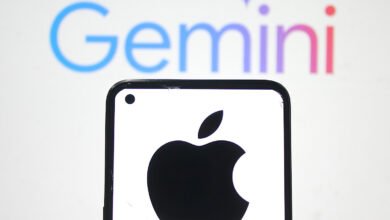iPad Mini 8: Everything We Know About Features and Release

▼ Summary
– A new iPad mini is confirmed to be in development and will likely feature the mid-tier A19 Pro chip found in the iPhone Air for improved performance.
– The iPad mini 8 may transition from an LCD to an OLED display, potentially increasing in size from 8.3 to 8.7 inches with enhanced color and contrast.
– The A19 Pro chip offers significant GPU improvements, including a 3x peak compute boost and a 16-core Neural Engine for AI tasks.
– The OLED iPad mini is expected to launch between 2026 and 2027, with conflicting reports on the exact timing and possible synchronization with iPad Air updates.
– Pricing for the new iPad mini may remain at $499, though there are suggestions Apple should consider a lower price to compete with more affordable rivals.
The upcoming iPad Mini 8 is generating significant buzz, with reliable sources confirming its development. Bloomberg’s Mark Gurman has definitively stated that a new iPad mini is “absolutely” in the pipeline, setting expectations high for Apple’s next compact tablet offering. This successor to the iPad Mini 7 promises notable upgrades that will enhance the user experience.
At the heart of the new device, performance is expected to see a substantial leap. Code accidentally shared by Apple points to the iPad Mini 8, identified by the codenames J510 and J511, being equipped with the A19 Pro chip. This powerful processor, which first appeared in the iPhone Air and iPhone 17 Pro models, is anticipated to be the mid-tier variant for the tablet. This version features a 6-core CPU but utilizes one fewer GPU core compared to the top-tier chip found in the Pro iPhones. This strategic choice aligns with the precedent set by the iPad Mini 7’s A17 Pro chip configuration.
The A19 Pro is fabricated using an advanced third-generation 3-nanometer process, known as N3P, which delivers improvements in both speed and power efficiency. The chip incorporates a 16-core Neural Engine dedicated to accelerating artificial intelligence tasks, alongside next-generation technologies like dynamic caching and unified image compression. The graphics processing unit has received a significant architectural overhaul, boasting a larger cache, increased memory, and Neural Accelerators integrated into each core. Apple claims this redesigned GPU offers triple the peak computational performance of its predecessor, marking a generational leap in graphics capability.
One of the most anticipated changes involves the display. Widespread rumors indicate Apple plans to move the iPad mini from a traditional LCD screen to a modern OLED panel. A leaker with connections to Apple’s supply chain reported that the company has been evaluating OLED displays manufactured by Samsung for the next model. It remains uncertain, however, if this new screen will support a refresh rate higher than the current 60Hz. Another report suggests the screen size could grow from 8.3 inches to a more spacious 8.7 inches with the shift to OLED technology.
OLED technology provides superior image quality by allowing each pixel to be controlled individually. This results in perfectly deep blacks, more accurate color reproduction, and a dramatically higher contrast ratio. Additional benefits include faster response times, wider viewing angles, and greater flexibility for device design. While Apple’s flagship iPhones have used OLED for years, the technology made its debut on the iPad Pro in mid-2024. Unlike the high-end, two-stack LTPO OLED panels on the iPad Pro, the iPad mini might feature a more standard single-stack LTPS panel. This could mean the display may not be as bright and might continue to lack the smooth ProMotion adaptive refresh rate feature.
Predicting the release timeline involves piecing together several reports from industry analysts. Research firm Omdia projects that the iPad mini will transition to an OLED display in 2027. Conversely, Korean publications ET News and ZDNET Korea have suggested a simultaneous update for both the iPad mini and iPad Air with OLED screens in 2026. In a significant development from May 2024, it was reported that Samsung Display had begun developing sample OLED panels for a future iPad mini, with mass production slated to begin at its Cheonan facility in the latter half of 2025. This report also claimed that the iPad Air would receive an OLED panel alongside the mini in 2026.
This outlook presents a slight variation from a December analysis by Display Supply Chain Consultants (DSCC), which forecasted an 8.5-inch OLED iPad mini for a 2026 launch, with OLED iPad Air models in 11-inch and 13-inch sizes expected to follow in 2027. Ultimately, while rumors about the exact launch date have not yet converged, a release in the first half of next year alongside new iPad Air models remains a strong possibility.
Regarding cost, there is no concrete information suggesting Apple will alter the pricing structure for the new iPad mini. In his newsletter, Gurman noted that Apple might want to consider introducing a more budget-friendly version of the mini or adjusting its current $499 starting price. This is particularly relevant as the device competes with rival products that are often significantly less expensive. For consumers seeking a more affordable entry into the Apple tablet ecosystem, the 10th-generation iPad presents a compelling alternative. Starting at just $329, it includes many popular features like Touch ID and Center Stage, offering a solid balance of functionality and value.
(Source: Mac Rumors)





